A Spiritual Family Trip To Koyasan, Japan’s Most Sacred Destination
A Journey into heaven-touched Japan with the kids
Mystical, magical, esoteric, deeply moving… Koyasan cannot be described – it must be lived.
Arguably the most sacred mountain in Japan, Mount Koya, or Koyasan as it is locally known, is a religious town in Wakayama Prefecture, long closed off from anywhere else. Its temple-lodges and ancient forests invite spirituality while the sacred mountains of the Kii peninsula encompass the very essence of the spirit of Japan.
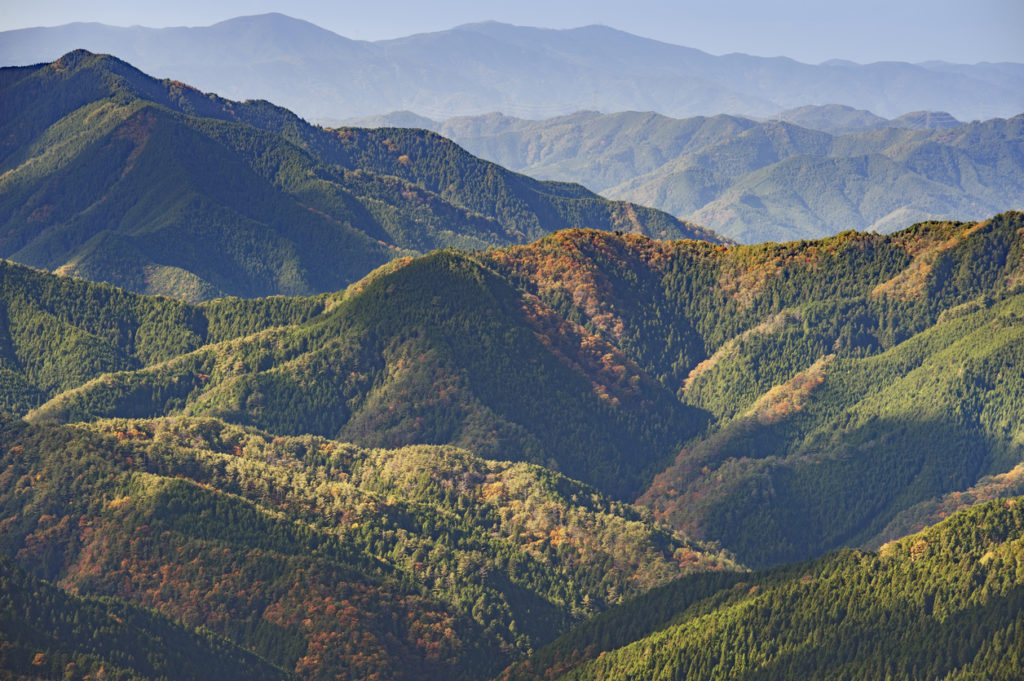
Koyasan was declared a UNESCO Heritage Site in 2004. It is the center of Shingon Buddhism, a Chinese influenced esoteric sect brought to Japan in 805 by Kobo Daishi (also known as Kukai), one of Japan’s most revered spiritual leaders. It is the start and end point of the Shikoku 88 Temple Pilgrimage, and the start of our own family’s exploration of the region, a destination we had always dreamt of visiting.
Earthly peace and heavenly hike
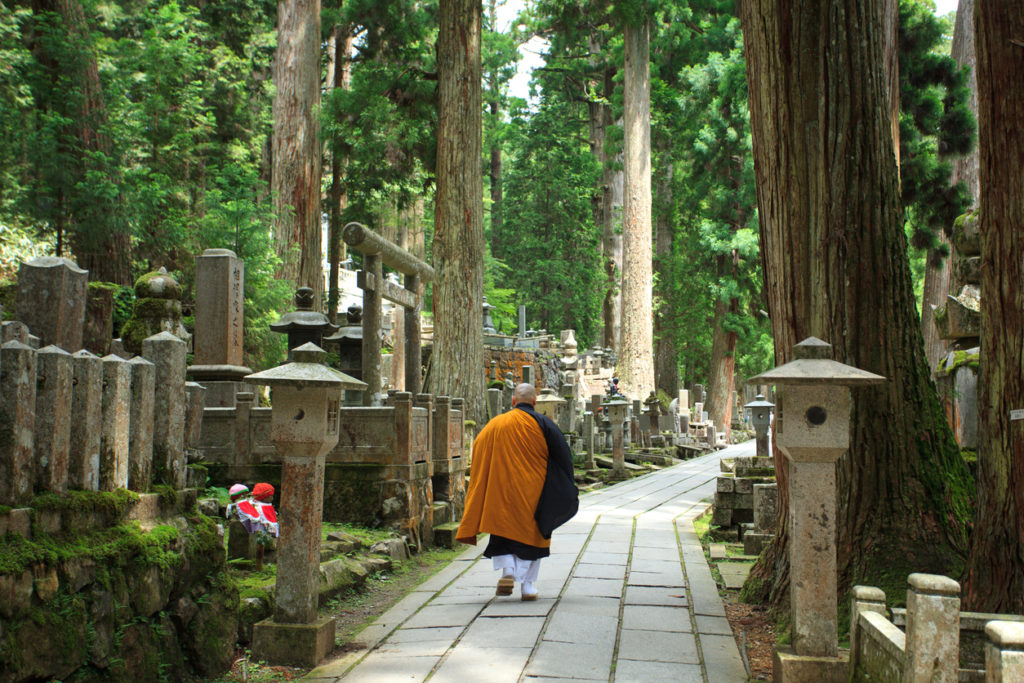
Kobo Daishi began construction of the main Garan temple complex in 816 after wandering the country for years in search of a suitable place to center his religion. Since then, over 100 temples have found their homes along the streets of Mount Koya, with the most important being the Kongobuji, the head temple of the Shingon Buddhism, and the incredible Okunoin cemetery, the site of Kobo Daishi’s mausoleum.
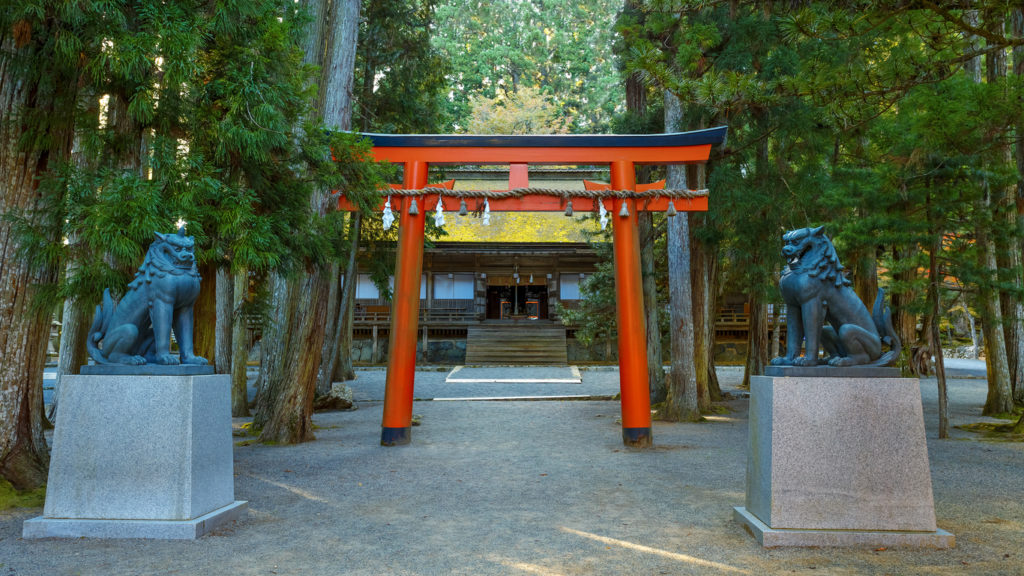
While Koyasan is one of the best places to experience an overnight stay at a temple-inn (shukubo) where you get a taste of the monks’ lifestyle, eat vegetarian monks’ cuisine (shojin ryori) and attend morning prayers, we were traveling with the children, so we opted for the very funky Kokuu guesthouse, complete with individual bunk bed pods and a very entertaining Italian running the place.
It feels like crossing a bridge between two worlds.
Knowing that Koyasan is also a haven for hikers, energized in the morning, we woke early and took the kids on the Women Pilgrims Course, a stunning forested walk that leads around the perimeter of Koyasan from the Fudozaka-guchi Nyonindo past the ruins of the other Nyonindo — all temples catering to female visitors banned from entering the town before 1872.
The hike is about 7 km long and takes about 2.5 hours. It ends at the entrance of the incredible Okunoin cemetery, a place, where according to the Shingon Buddhists, there are no dead — just souls waiting in transit.
Embracing silence
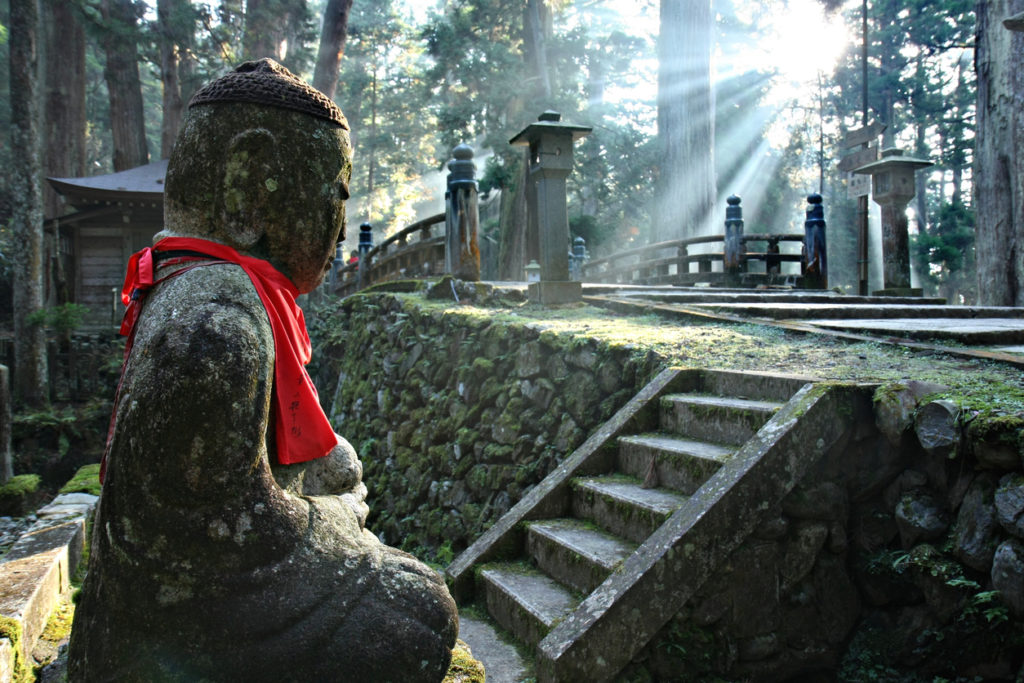
There is no way to describe wandering through the town’s silent and seemingly endless cemetery where 200,00 graves and shrines are nestled deep in a thick cedar forest whose trees average between 200 and 600 years old.
Having walked it with the children during the day, at night we left them under the watchful eyes of our trusted Italian at the inn and took a monk to guide us through the cemetery. Darkness engulfed us, though light — in the shapes of moons and suns — shone out from the stone lanterns that cut a path through the woods.
“The moon is like the brain,” our monk told us – “clear, pure, bright and clean but changing daily – one day you might be happy, the next sad, but most importantly it has to be illuminated by the sun…as Kobo Daishi illuminates the mind…”

Leaving the main path and venturing amid the forgotten tombs in the darkness, the red-bibbed statues, statues with knitted hats, the stones covered in moss, you quickly realize that nature has reclaimed her rightful place. It is an awe-inspiring setting that is indescribable. In one spot we were instructed to look down a well. If we couldn’t see our reflection then we’d die within three years. We were a little nervous as we peered into the deep dark water but thankfully saw ourselves.
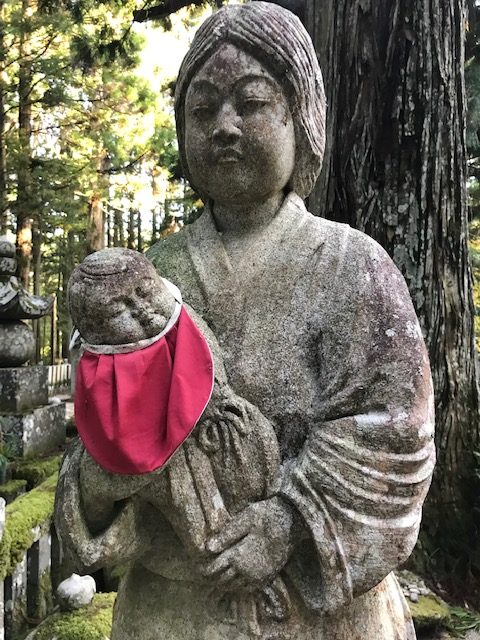
The styles of the burial memorials vary too much to take it all in, but the most spectacular corporate tombs catch the eye such as an enormous rocket from the aerospace company Shin Meiwa Kogyo and a stone Yakult bottle dedicated to the employees of the firm. Everywhere are five-tiered tombs – each layer depicting first earth, then wind, water, fire and finally space, as it is believed our souls move through all the elements.
“Shintoism is a celebration of the start of life, of birth, of nature, of new beginnings, whilst Buddhism prepares for the end of life. Therefore, for years there were great conflicts between the two religions,” our monk tells us, “though here in Japan we like to choose the best when it suits us – like my mother who had a Christian wedding since she longed to wear a white dress,” he smiles. We walk back to the inn enlightened.
A morning with the monks
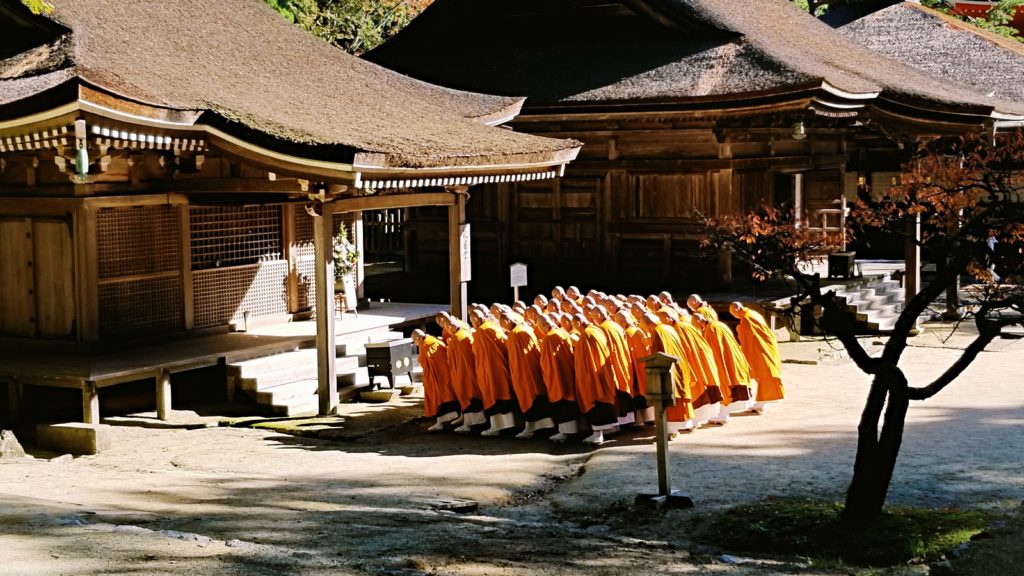
At 5:30 a.m. the next morning, I wake my 10-year-old daughter Georgia and together we head for the cemetery, hand in hand through the eerie morning mist to watch the monks preparing breakfast for Kobo Daishi. My husband had been the day before and it was now my turn. It is believed that he lives in an eternal state of meditation some 1,000 years later. As the tombs and statues peer out at us through the rising morning light, I am glad to have my daughter with me. At a certain point, photos are no longer allowed and the spirituality of the moment overwhelms.
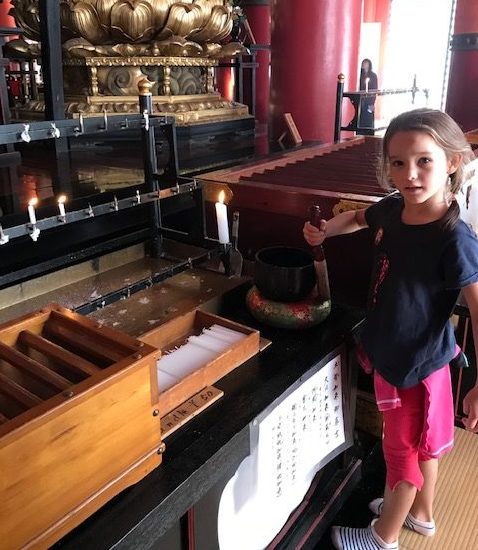
We bow. Too cold to wash ourselves, we douse water over the statues guarding the entrance and follow the breakfast-carrying monks across the Gobyo no Hashi bridge, which leads the way to the mausoleum. It feels like crossing a bridge between two worlds. On the other side the atmosphere is different, the silence heavily sacred. We stop at the top of the wooden stairs, remove our shoes and almost gasp as we enter the temple. Six saffron-robed monks sit by candlelight waving incense to and fro. The chants of the moment are overwhelming. Though it is still dark, there are thousands of bright orange lanterns all containing the ashes of whole families, hanging just above our heads.
“It feels like we might see Harry Potter,” Georgia whispers.
For the next 30 minutes we sit cross-legged just behind the monks, meditating in silence as best we know how. It is a very special moment.
Wishes upon soul-cleansing fires

Back at the guest house, it’s 7 a.m. and I swap kids and take my 9-year-old son Ollie to the Goma fire ceremony the monks are hosting down at the Ekoin Temple.
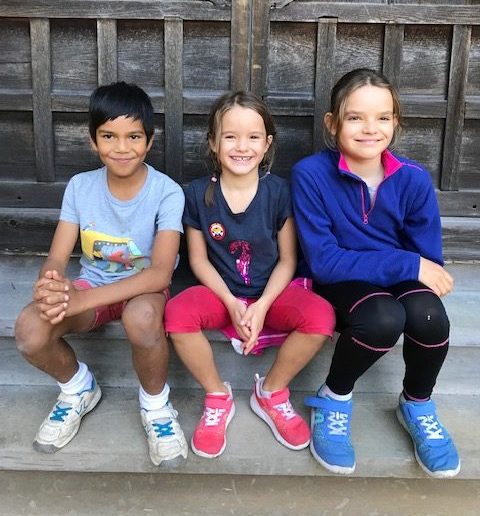
When we arrive, the fire is already several meters tall, as two monks are kneeling beside it fueling it with wood. We watch as the fire is blessed with repeated prayers. The consecrated fire is believed to have a powerful cleansing effect both spiritually and psychologically. The fire represents the wisdom of Buddha and the wood sticks symbolize the human desires – the root of suffering. As we watch the monks burning away the root of our suffering, we pray for our wishes to come true. Ollie tells me he has prayed for his own mobile phone.
As far as ancient forests and sacred mountains go, Koyasan has to be amongst the world’s best. Every temple and gate is stunning, especially the multi-templed Danjo Garan, often described as the second most sacred site in Koyasan. Visit at sunrise and you might just be lucky enough to see the many monks blessing each of the 20 structures as we did. And don’t miss Banryutei, Japan’s largest rock garden in the courtyard of the Kongobuji temple, built to commemorate Kobo Daishi’s ascent into eternal meditation.
It is a magical place. Whatever you do while in Japan, make sure you leave time for Koyasan.
Getting there
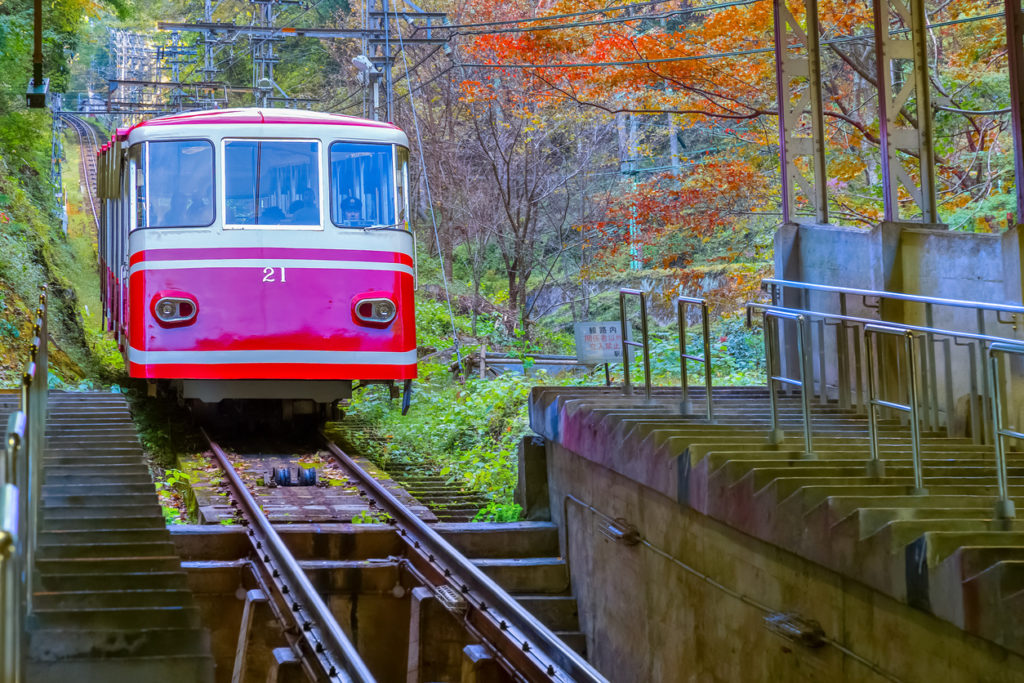
Reach Koyasan by Nankai Electric Railway from Namba Station in Osaka. Get off at Gokurakubashi Station at the base of the mountain. From there it’s either an hour’s walk through ancient forests to Koyasan village, or take the picturesque cable car which takes 5 minutes. Then a short bus ride and you’re in the village. For more information, see the official Koyasan website here.













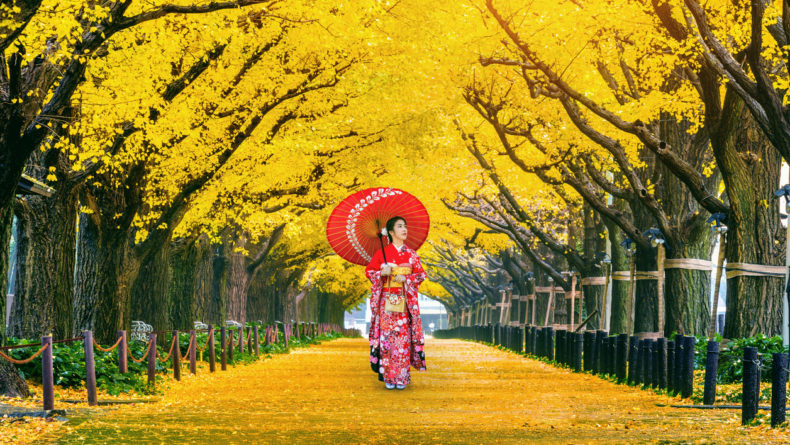
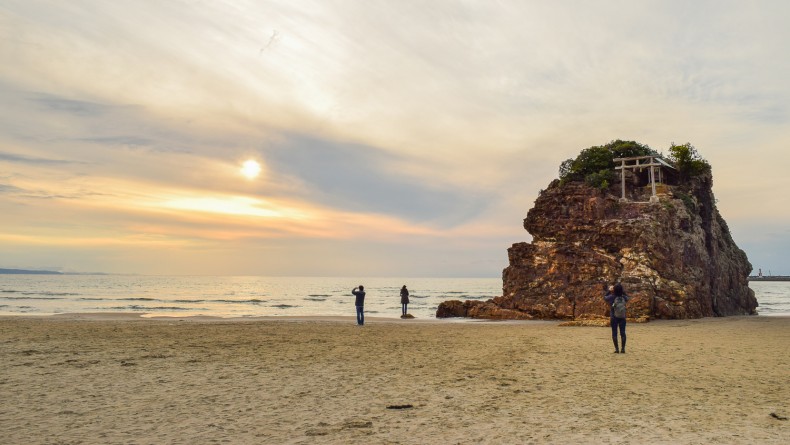

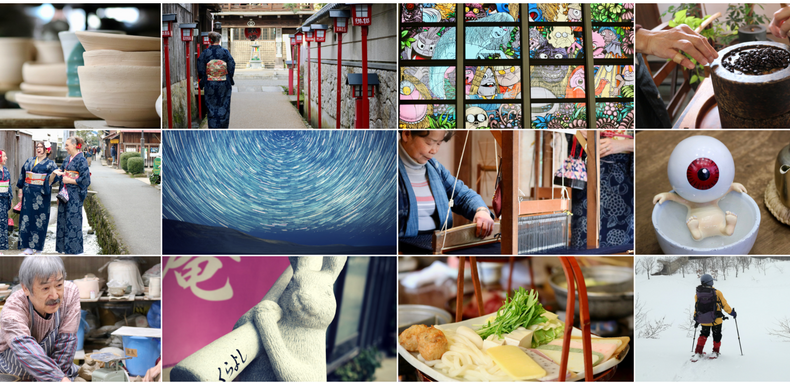
Leave a Reply